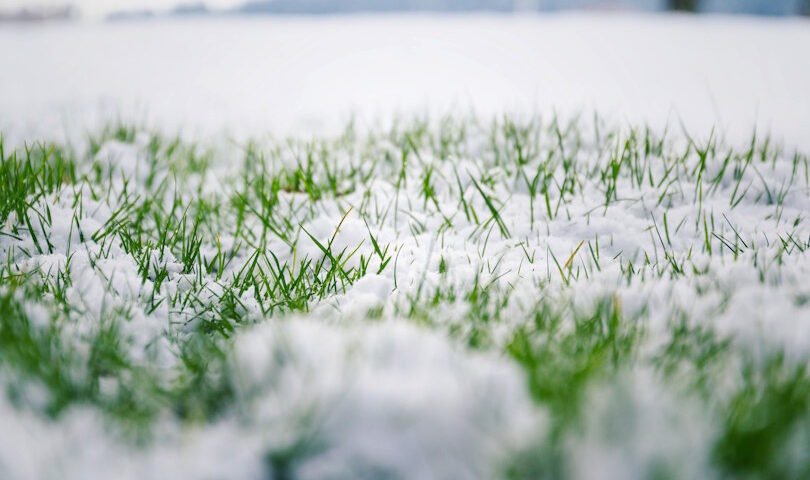When the temperatures drop and snow starts to fall, most lawns fade from vibrant green to dull brown. But with the right preparation, care, and equipment, it’s possible to keep your lawn healthy and even green through the winter months. Whether you’re wondering how to keep grass green in winter or which grass stays green in winter, this guide will walk you through what works best for Connecticut homeowners.
1. Know Your Grass Type
Before deciding how to keep your lawn green in winter, you need to know which type of grass you have. Cool-season grasses—like Kentucky bluegrass, fescue, and perennial ryegrass—are best suited for New England’s cold winters. These varieties can stay green longer because they thrive in lower temperatures.
If you have warm-season grasses (like Bermuda or Zoysia), expect them to go dormant and brown out during the cold months. In that case, overseeding with a cool-season grass in early fall can help maintain that green color throughout the winter.
2. Keep Feeding Your Lawn
Fertilizing before winter is one of the most effective ways to keep your grass green in the winter. A late-fall or early-winter fertilizer—rich in nitrogen and potassium—provides nutrients that strengthen roots and protect the lawn from frost damage.
Apply a “winterizer” fertilizer in late October or early November so the grass stores energy to stay green longer and bounce back quickly come spring.
3. Don’t Stop Mowing Too Soon
Even as temperatures cool, continue mowing until your grass stops actively growing. Keeping your lawn slightly shorter (around 2–2.5 inches) helps prevent snow mold and promotes even color retention. Be sure to use sharp mower blades to avoid damaging the grass tips, which can cause brown spots.
River East Power Equipment carries a variety of mowers and maintenance tools to make this process easy and efficient throughout the season.
4. Water Wisely
While winter brings more moisture, your lawn may still need watering before the ground freezes—especially after dry fall conditions. Consistent moisture helps the soil absorb nutrients and keeps roots strong. Avoid overwatering, as excess water can lead to ice formation that suffocates the grass.
5. Aerate and Overseed Before Winter
Aerating your lawn before winter helps reduce soil compaction, allowing air, water, and nutrients to reach the roots. Follow it up with overseeding using a cool-season blend to fill in any bare patches. This ensures a dense, lush appearance even during colder months.
6. Limit Foot Traffic
During winter, your grass is more fragile. Try to limit heavy foot traffic or equipment on your lawn, especially when it’s frosty or wet. Repeated pressure can compact soil and damage roots—making it harder for the grass to stay green.
7. Use the Right Equipment
Keeping your lawn looking great all year starts with having the right tools. From reliable mowers and blowers to winter-ready power equipment, River East Power Equipment provides everything you need to make your grass green in winter and keep it healthy no matter the weather.
Final Thoughts
So, does grass stay green in winter? The answer depends on your preparation and the type of grass you have. With the right fertilization, overseeding, and maintenance, your lawn can stay vibrant even when temperatures drop.
Ready to keep your lawn green this winter? Visit River East Power Equipment to explore our selection of lawn mowers, snow blowers, and professional-grade tools to help you maintain your property all year long.
